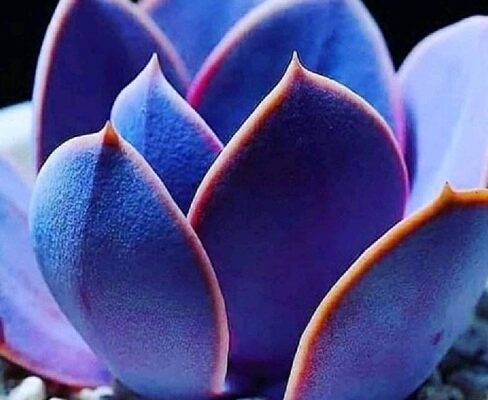How to Grow Nerve Plant Fittonia: Easy Tips
Looking for a plant that thrives in low-light conditions? Look no further than the nerve plant (Fittonia albivenis). With its stunning foliage, this plant can brighten even the darkest spaces.
Nerve plants, which belong to the Fittonia genus, are named for their appearance. Their deep green leaves are veined with pink, white, or red, resembling the intricate patterns of a nervous system. These spreading evergreen perennials, also known as mosaic plants (although that term is typically reserved for Ludwigia sedoides), retain their striking foliage throughout the year. In shady areas, they can even serve as creeping ground cover, depending on the climate.
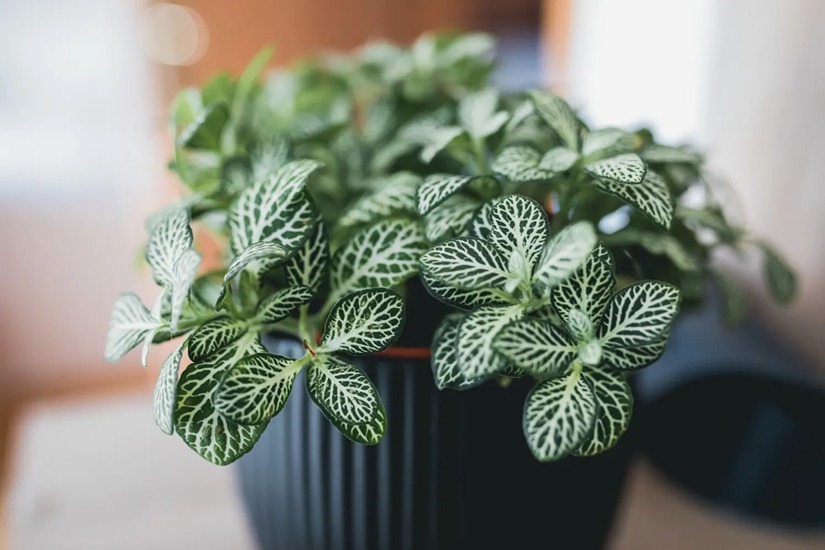
If other plants struggle to adapt to low-light conditions in your home, consider adding a nerve plant. This compact and low-maintenance houseplant features distinctive foliage and requires minimal light. It’s perfect for placing small pots on tabletops, bookshelves, or desks in both homes and offices.

Care Guidelines
To ensure the optimal growth of a nerve plant, certain conditions must be met. These plants thrive in environments with indirect, filtered light and require regular watering. They are particularly well-suited for darker spaces and can even grow in low-light conditions. However, it’s important to avoid placing it in direct sunlight, as it is prone to leaf burn. Instead, provide it with low to medium light. If the plant is positioned near a sunny window, you can filter the direct sunlight by using a sheer curtain.
Medium humidity is essential for nerve plant species, and they flourish when the soil is consistently moist. If your plant is not receiving enough water, it will visibly droop. To revive it, closely monitor its moisture levels and give it a thorough watering by ensuring the soil is evenly soaked. Allow any excess water to drain from the planter. Following these steps should help your nerve plant regain its vitality.
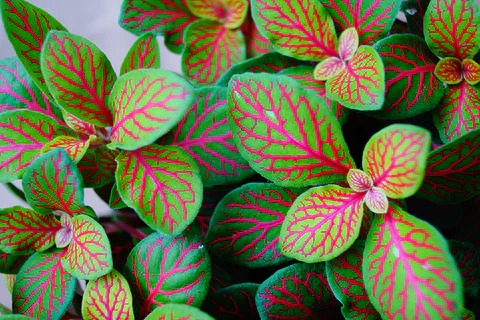
Lighting Requirements
The nerve plant thrives in humid environments reminiscent of its tropical origins. When cultivating the plant indoors, it is important to recreate a moist atmosphere. However, it should not be exposed to direct sunlight. Instead, plants prefer bright, indirect light provided by natural light or fluorescent lighting. If you choose to place the plant near a window that receives afternoon sunlight, it is advisable to use sheer curtains to prevent leaf burn.
Soil Requirements
For optimal growth, nerve plants require moist and well-draining soil with a slightly acidic pH. When cultivating them in containers, using a peat moss base is beneficial as it facilitates water drainage. If you prefer not to use peat moss, you can create a suitable soil mixture by combining equal parts of potting mix, peat, humus, and coarse sand.
Watering Guidelines
To ensure healthy growth, nerve plants should be watered every two to three days during the growing season. However, it’s important to allow the soil to dry completely between watering sessions. Maintaining moist soil is crucial, as overwatering can lead to yellow or limp leaves. In the winter or off-season, plants require less frequent watering, usually once every few weeks. It’s crucial to avoid letting the plant dry out completely, as this can cause it to collapse.
Temperature and Humidity Requirements
Nerve plants flourish when exposed to conditions reminiscent of their tropical origins. Adequate humidity is crucial for their well-being, and misting the plants helps to retain moisture. When cultivated indoors, nerve plants thrive in environments with high humidity, such as bathrooms with showers or terrariums. In the winter, using a humidifier in the room can also provide the necessary moisture. It is recommended to maintain temperatures around 70°F (21°C), preferably within the range of 60°F to 80°F (15°C to 27°C), to ensure optimal growth and results.
Fertilizing Guidelines
During the spring and summer, which are the growing seasons for nerve plants, they can benefit from a balanced 5-5-5 fertilizer. It is recommended to dilute the fertilizer to half strength when applying it. If necessary, fertilizers specifically designed for tropical plants can be used to enhance growth during this period. However, it is important to refrain from fertilizing nerve plants in the fall or winter when their growth naturally slows down.
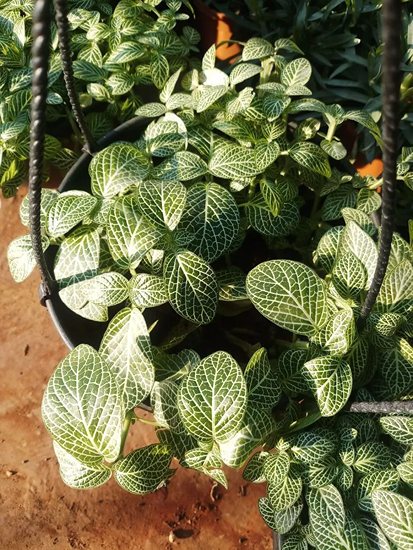
Varieties of Nerve Plants
A wide array of nerve plants with various color combinations is available for purchase. The names of these selections often reflect their distinctive foliage colors.
- ‘Pink Angel’: This plant displays deep green leaves adorned with vibrant pink veins.
- ‘Purple Vein’: A lavender-striped variety of nerve plant.
- ‘Leather Leaf’: This particular plant features large foliage with striking white veins.
- ‘Daisy’: The ‘Daisy’ variety showcases sizable leaves in shades of white, grey, and green, creating a variegated appearance.
Pruning Guidelines
When grown under favorable conditions, nerve plants generally require minimal pruning to maintain their full appearance. However, if a nerve plant becomes excessively elongated, pruning becomes necessary. Fortunately, there are three simple steps to address this issue.
- Pinch Back Stems: To combat leggy growth, gently pinch back the stems using your fingers or pruning shears. Trim the stems approximately a quarter of an inch above the leaf node.
- Remove Flower Spikes: Nerve plants rarely bloom, especially when grown under artificial lighting. If flower spikes appear, promptly remove them to prevent weakening of the leaves. It is advisable to eliminate the flower spikes as soon as they emerge.
- Optimal Lighting: Ensure the nerve plant receives appropriate indirect lighting. Excessive or insufficient light can contribute to leggy growth. Maintaining the right balance is crucial for healthy plant development.

Propagation
Nerve plants can be propagated either through stem-tip cuttings or seeds, although the latter method is less effective. For optimal results, it is recommended to take stem-tip cuttings during late spring or early summer. Here’s a step-by-step guide on propagating nerve plants using stem-tip cuttings:
- Prepare the Cuttings:
Using a clean and sharp knife or garden shears, cut the stem tips at an angle. It’s advisable to choose a stem that has at least two leaf nodes below the cutting for better success. Aim for a cutting length of around four inches.
- Optional Rooting Hormone:
If desired, you can dip the cut ends of the stem-tip cuttings into a rooting hormone before planting. This step can potentially aid in the rooting process, especially if you have concerns about the temperature conditions.
- Planting the Cuttings:
Fill a pot or container with a peat-based soil mixture. Immediately after taking the cuttings from the original plant in the spring or summer, plant the stem tips directly into the container. Ensure that the bottom of the cuttings is inserted into the soil.
- Maintain Moisture:
Keep the soil consistently moist but well-drained. It’s crucial to strike a balance between providing enough moisture and preventing waterlogged conditions. Within two to three weeks of planting, new root growth should begin to emerge.
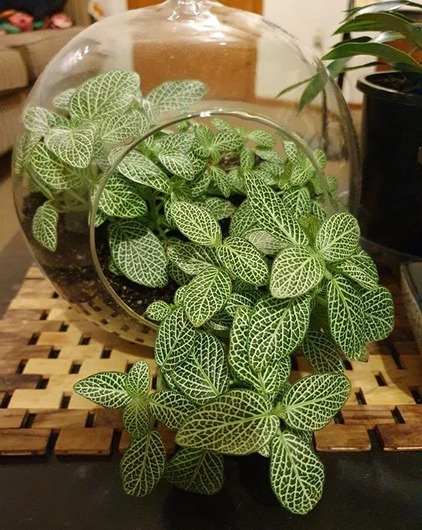
Growing from Seeds
Growing nerve plants from seeds can be a more challenging method compared to other propagation techniques, but it is still possible to achieve success. Here’s a step-by-step guide:
- Acquire Seeds: Obtain seeds either by collecting them from an existing nerve plant or purchasing them from a garden center or reputable source.
- Sowing the Seeds: Fill pots with a suitable potting mix and sow the nerve plant seeds into the soil. Ensure the pots are placed in a location with a minimum temperature of around 65°F (18°C).
- Covering the Seeds: Lightly cover the seeds with a thin layer of peat moss mixed with soil. This helps create a suitable environment for germination.
- Maintaining Moisture: Keep the soil consistently moist by gently watering it. It’s crucial to strike a balance and avoid waterlogging, as excessive moisture can hinder seedling growth.
- Germination: With proper care, nerve plant seedlings should emerge within approximately three weeks. During this period, ensure the pots are placed in a warm and well-lit area to support germination.

Potting and Repotting
In order to maintain the health of your nerve plants, it is recommended to repot them annually, preferably in the spring or summer just before new growth begins. When repotting, ensure that you use fresh potting soil or a mixture that includes peat moss to promote proper water drainage. Additionally, it is crucial to select a container with adequate drainage holes to prevent water logging. By following these guidelines, you can provide optimal conditions for your nerve plants and support their overall well-being.
Overwintering
During the winter, nerve plants typically experience dormancy or reduced growth due to their preference for humid environments. Consequently, they require minimal maintenance and less frequent watering during this period. It is advisable to refrain from fertilizing nerve plants in winter, as encouraging growth in colder temperatures is not ideal. Pruning is generally unnecessary as well. However, it’s important to ensure that plants are placed in an area with indirect sunlight and some protection from the cold. To create the moist and humid environment that plants thrive in, using a room humidifier can be beneficial. By providing appropriate care and environmental conditions, you can successfully overwinter nerve plants and ensure their well-being until the growing season resumes.
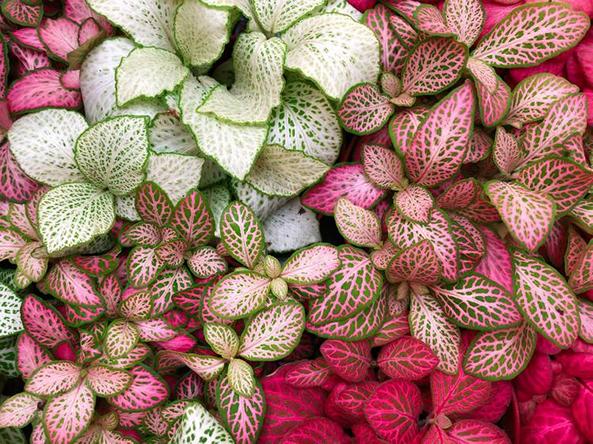
Common Pests & Plant Diseases
Nerve plants are prone to various insect pests, such as mealybugs, scales, spider mites, slugs, aphids, and fungus gnats. To combat these pests, it is recommended to use insecticidal oil, such as neem oil. If you observe small holes in the foliage of the nerve plant, it may indicate the presence of leaf beetles.
In addition, nerve plants can be affected by certain diseases, including root rot, leaf spot diseases, and powdery mildew. To prevent these diseases, ensure proper air circulation and maintain foliage moisture at an appropriate level without excessive saturation. If you notice a white powdery coating on the leaves, using insecticidal soap can gently remove it. If the issue persists and the foliage shows signs of yellowing or browning, it is advisable to remove the affected stems to prevent further infection of the entire plant. By staying vigilant and taking appropriate measures, you can effectively address common pests and diseases that may affect your nerve plants.
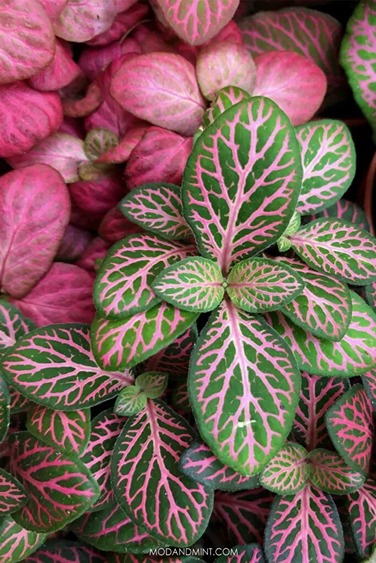
Common Issues
Yellowing Leaves
When the leaves of a nerve plant turn yellow, it is usually a sign of overwatering. To address this, ensure that the soil is allowed to completely drain before watering again. The ideal moisture balance depends on factors such as fertilizer, soil nutrients, and temperature conditions. Before watering, check the soil by feeling the top inch with your fingers to ensure it is dry. Additionally, using containers with drainage holes is important to prevent waterlogging.
Drooping Leaves
Drooping or leaf drop in nerve plants can occur due to dehydration or seasonal changes, particularly during winter when temperatures drop. Depending on your environment and the time of year, the plant may enter a dormant phase. To stabilize the plant, place containers in areas with indirect sunlight that mimic the plant’s native tropical environment. Bathrooms with showers, which provide warm steam, can be suitable locations. Using a room humidifier in winter can also be beneficial, as it helps maintain a moist environment and protects the plant from direct sunlight that may cause leaf burn.
